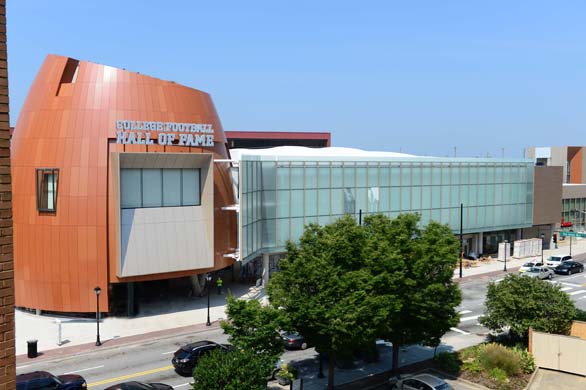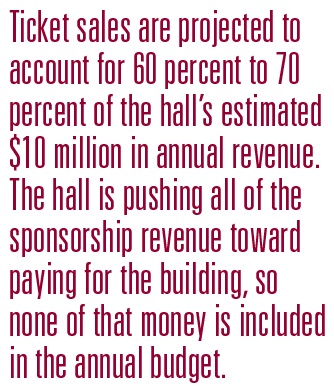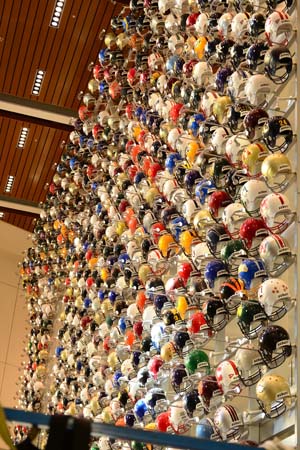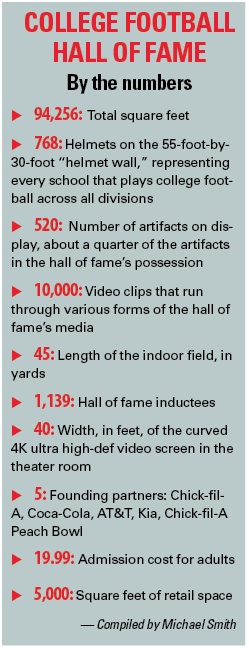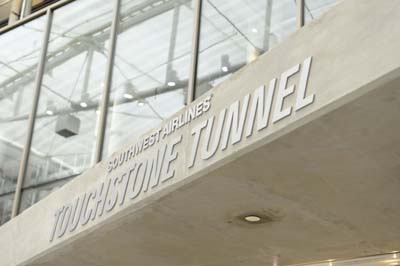Pitbull, born Armando Pérez, self-titled Mr. Worldwide, and often known simply as Pit, slides into his seat at a hotel restaurant about 25 minutes inland from South Beach. The place is well outside the Miami party scene and its paparazzi, and is either purposefully retro—deco chairs, white tablecloths, a waitress who must be 80 wearing bright coral lipstick—or hasn’t been updated in 50 years. It’s empty save for one of the biggest pop stars in the world and a group of his associates, all wearing suits, and clustered at two tables. Pitbull taps his water glass, and the waitress hurries over to fill it. His lawyer, Leslie Zigel, hands him an agenda, which offers topics like “Endorsement Deal Matters,” “Investments,” and, in capital letters, “DISRUPTION.”
Zigel and Pitbull started working together in 2010, after Pitbull closed his first major sponsorship deal, with
, which Zigel was representing at the time. “He told me he appreciated my approach to dealmaking and asked if I would consider joining his team,” says Zigel. “I’m a jazz bass player, and he liked that I thought like a musician, not a typical lawyer.” Zigel looks like Stanley Tucci and speaks to Pitbull encouragingly, like a cheerful high school gym teacher.
Cars: In a series of Spanish and English ads for the Dodge Dart. En Español: “Cómo hacer un auto.”
Beer: Stars in two Bud Light ads as part of a multicultural campaign. Both spots take place in a club and feature his song
Bon Bon (“Don’t stop the paaaarty!”).
Soda: Appears in a Dr Pepper TV ad titled “Dream,” about making it as an immigrant. “I’m Pitbull, and I’m one of a kind.”
After discussing a few of Pitbull’s investments—a restaurant chain called Miami Subs Grill that’s undergoing storefront renovations and a water filtration system called EcoloBlue that Pitbull believes will be a “game changer”—the rapper moves down to “Meetings” and says, “Let’s do Bitcoin.”
Zigel slides over a stack of articles about Bitcoin and mentions a possible sitdown with Merlin Kauffman, who runs a $7.5 million Bitcoin investment fund focused on the hardware that runs the currency. Pitbull flips through the pages quickly, not displaying much interest. In public, Pitbull is rarely seen without an enormous pair of aviator-style sunglasses, but he’s left them off for this meeting. His exposed eyes are ocean-colored, surrounded by little-girl lashes. Freckles dot his nose. There’s a
Twitter joke that compares a picture of Pitbull to Lord Voldemort, and while uncharitable, there’s something to it, with that crowded, leonine smile and menacing cannonball-like head.
“I still want to know, what exactly is Bitcoin?” Pitbull says. “How real is it? Is it going to be adopted and be disruptive?”
“The people who are going to adopt it are young,” Zigel replies. “If it’s something they decide they want to do, it’s going to be a force to be reckoned with.”
“What makes this real money?”
Zigel, looking unsure, glances quickly at the articles Pitbull has shoved back toward him. “It’s very speculative right now,” he says. “There’s nothing that’s holding it together.”
Pitbull is dubious. “No gold, no nothing?”
“No banks behind it, no.”
“Are they having problems with the streets?”
Zigel’s eyebrows rise. Pitbull may be referring to the financial markets, or he may be referring to streets of a grittier variety. Pitbull, 33, spent much of his life navigating them, as he’s quick to mention. He’s a first-generation American whose parents came to Miami from Cuba, his mother in the 1960s as part of Operation Pedro Pan—Miami’s effort to get children out of the communist country—and his father in 1980. Armando Sr. was a low-level criminal and drug dealer; he met Pitbull’s mother while she was what Pitbull calls a “burlesque dancer.” By the time Pitbull was a teenager and trying to make it as a musician, he’d dropped out of school and was dealing drugs. In 2001 he hooked up with successful rapper Lil Jon and producer Luther Campbell, the frontman for 2 Live Crew, and in 2004 released his first album,
M.I.A.M.I. It featured the single
Culo, which peaked at No. 32 on the Billboard Hot 100.
Culo, which translates, roughly, to “ass,” is what’s referred to as reggaeton—an upbeat sound that combines hip-hop, Jamaican dancehall, and more traditional Latino music such as salsa. In it, Pitbull raps in English and Spanish, and his style is hypnotizingly monotone, making it an ideal counterpart for a great hook.
In the decade since, Pitbull has become ubiquitous and is moving into the territory of empire builder, along the lines of 50 Cent or Jay Z. His publicist, Tom Muzquiz, a peppy man with spiky hair who’s lingering at the next table, promised to figure out the perfect day for us to spend together to help me understand his boss’s reach and ambition. And it didn’t involve a yacht or a crazy night out in South Beach or anything to do with his outsize lifestyle. Exciting for Pitbull, now, is thinking about things other than partying, studio time, and ladies. (He has six children with an undisclosed number of women.)
This hotel restaurant isn’t just where Pitbull asked to meet on this day, it’s where he conducts business; he doesn’t have a normal office, so he holds meetings here, sometimes jumping from one table to the other. The location is perfect for Pitbull, as it’s private enough but doesn’t deny him the pleasure of a Greek chorus of Yes Men. He asks that I keep it a secret. If it gets out, Muzquiz says, “it could create problems.” Along with Zigel and Muzquiz, the group consists of Pitbull’s manager, Mike Calderon, and a few large, intimidating men whose purpose seems to be laughing when Pitbull tells a joke. At one point someone’s phone goes off. The ringtone is
Timber, Pitbull’s most recent No. 1 hit, which features Kesha singing, “It’s going down, I’m yelling Timber!” Pitbull rolls his eyes.
Even if you don’t know who Pitbull is, you do. You’ve danced to a Pitbull song at a wedding or seen him in a commercial. He’s sold more than 5 million albums worldwide in an era when people hardly buy albums, and his YouTube videos have exceeded 5 billion views. He’s had nine top 10 singles internationally, including No. 1 hits such as 2011’s
Give Me Everything, featuring the R&B artist Ne-Yo. He’s sold out numerous world tours and is teaming up in the fall with Enrique Iglesias. He’s an endorsement machine, chalking up deals with Dodge,
Bud Light, and
Kodak. Like many hip-hop stars, he owns a vodka brand. His is called Voli—it’s low-calorie.

His songs are contagious, the kind of poppy club tunes that DJs play to get everyone on the floor. On his own, he’s OK, but Pitbull’s real success comes from collaborations with other artists—song co-headliners include Usher, Chris Brown, T-Pain, Marc Anthony, Jennifer Lopez, Christina Aguilera, and Pharrell Williams, among others. They sing the hooks, Mr. Worldwide raps through the bridge, and suddenly everyone’s hands are in the air. He is expert at gathering up talent, and then packaging and producing the final product. Pitbull’s got this thing of yelling “
Dale!” during his songs, which means, “Go ahead!” or “Do it!” or “Give it!” It’s become a rallying cry for his fans, a kind of F-U to music snobs who might discount the rapper’s slightly pedestrian rhymes. People want to have fun. Pitbull knows how to deliver it.
Accordingly, Pitbull is rich. Estimates of his wealth range from $10 million to $20 million, most of that coming from endorsement deals with huge American companies. Corporations have decided that he’s the answer to landing Latino customers. In 2012 the Latino population in the U.S. was 53 million, a 50 percent increase from 2000, according to the Pew Research Center. Latinos now account for 17 percent of the U.S. population and collectively spend more than $1.3 trillion each year, according to
Nielsen. In the past month, brands such as Hyundai,
ESPN, and Corona have unveiled national ads entirely or partly in Spanish. Colombian actress Sofia Vergara is now one of America’s best-paid endorsers, with high-profile deals with
Kmart,
Diet Pepsi, and
CoverGirl . Singer Shakira, also from Colombia, appears in ads for Dannon, Pepsi, and
T-Mobile, and just signed a deal with Oral-B and Crest. Actresses Eva Longoria and Jessica Alba star in far more commercials than their middling careers suggest they should. Companies are scrambling to win this demographic, and Pitbull is eager to help them.
Being Mr. Worldwide does take a toll, though. In his restaurant office, he’s constantly downing water. When the glass is empty, his eyes get manic. He’s jittery, jangly, as if he’s always about to jump up and run away. He looks 10 years older than he should, and his
Miami Vice-inspired clothes don’t help. For performances and public appearances, Pitbull wears black or white suits, sometimes with a tie, always with those aviators. Today he’s in a blue pinstripe jacket and blue vest, the buttons straining a bit against his stomach.
He gets up, returns, is ready to discuss the next thing, younow.com, a video startup, somewhere between Twitter and YouTube, that allows users to comment on videos as they watch them. His many partnerships and deals are brought to him, he says, by everyone—his team, his investors, himself. “Some people have amazing ideas, but nobody knows about them,” he says. “I partner with companies and say, ‘You get here, then we’ll step on the gas.’ ” He says he takes a rigorous approach to evaluating these possibilities. He does market-testing with children. “I get these companies to go to the schools and say to the kids, ‘What do you think about this? Do you think it’s cool?’ Then they’ll start using it, and say, ‘Did you think about this?’ ” He says he wants to be a billion-dollar brand in the next three years. That’s a long shot—neither Jessica Simpson nor the Kardashians are worth that much, though they both claim to be.
Pitbull and Zigel discuss his YouNow appearance on May 28, when he announced his partnership with entertainment and TV production company Endemol. This is what Pitbull excels at: using one of his businesses to promote another. Zigel says the test went well and user engagement was high. Pitbull has 16.9 million followers on Twitter and more than a million on
Instagram (FB), believes in his own promotional power, and has had, as much as anyone in the pop-culture landscape, success in convincing others of it, too.
In 2013, Chrysler signed Pitbull to help launch its latest entry in the compact-car segment, the Dodge Dart. Pitbull did two commercials for the car, one in English, one in Spanish, featuring him driving and offering the monumental swagger that has become his trademark. (In an ad for Bud Light, he makes an art form of merely walking through a crowd, capped off by what might be described as an epic lowering of a pair of sunglasses, followed by an historic grin.)
 Photograph by Christopher LeamanPitbull gets mic’d up for a July 7 interview on Univision
Photograph by Christopher LeamanPitbull gets mic’d up for a July 7 interview on Univision
Juan Torres, head of multicultural advertising for Chrysler Group, says Pitbull draws two different kinds of consumers: millennials and Hispanics. “Hispanics are not only brand-loyal consumers but are loyal to this particular car segment. So in that case, the strategic alignment with Pitbull made sense,” he says. “And when you start to peel back the layers, you see that 43 percent of millennials are multicultural, and so you have this incredible artist who resonates with all these different demographics.” Torres says that since the commercials aired, the Dart has steadily gained market share, with 20 percent of its buyers consisting of multicultural consumers.
Zigel and Pitbull move on to a proposed book, which they hope will create a bidding war among publishing houses. The title will likely be
From a Negative to a Positive. “It’s based on my motto,” explains Pitbull. “Since my mother started playing Tony Robbins when I was in the fifth grade, I’ve applied that to my life and career. It’s not only a business strategy, it’s for everything.”
“The book is just the first piece,” offers Zigel. They’re thinking of a self-help lifestyle brand, with Pitbull in the Robbins role.
He and Zigel discuss the possibility of investing in Vevo, the video hosting service that’s co-owned by Universal Music Group,
Google (GOOG), Sony Music, and Abu Dhabi Media. Zigel has made Pitbull a flowchart of online streaming revenue, showing how artists and labels make money off video views. Pitbull studies it, squinting. Finally, he says, “I don’t understand this. I see a lot of f---ing arrows, and only two f---ing arrows to the artist. Something’s wrong.”
Next up: a premium sake called Rock Sake, which aims to make the Japanese rice wine cool—like, bottle-service cool. Pitbull’s interested, but he wants to get Playboy Enterprises, with whom he has a strategic partnership, involved. Playboy’s waffling. “Scott isn’t necessarily on board,” says Zigel, referring to Playboy Chief Executive Officer Scott Flanders.
Flanders, who ran Macmillan Publishers and Columbia House before joining Playboy in 2009, anointed Pitbull the company’s artist-in-residence last year. “First we did our own brand tracking, and he had the lowest negative scores of any superstar that was in our constellation of consideration,” says Flanders, whose mission is to turn Playboy into a lifestyle brand that appeals to millennials. “We were quite surprised—anyone with a rapper background will have passionate fans but also detractors.” Playboy brought in PR and research firm Edelman to do an independent study on the star’s appeal. “They found that the overlap of attributes that people associated with Pitbull and Playboy was significant, and we got a forceful recommendation to proceed with striking a relationship.”
The seven-figure deal grants Pitbull fees as a brand ambassador as well as a “substantial” percentage of revenue from any licensed products. So far, Flanders is thrilled with the collaboration. “The interest from licensees has been staggering,” he says. “We had no idea how hot he is in countries like India, where we’re now doing deals. I talked to him about that, and he said, ‘Oh yeah, I’m hot there, and South America, too.’ So we went to Mexico.”
Zigel’s time is up. He stands, shakes hands all around, and goes back to the table of associates, where he does a kind of tag-team maneuver with Calderon, who’s next in line.
“I partner with companies and say, ‘You get here, then we’ll step on the gas.’ ”
Calderon is small and smiley, with a Latin accent and a suit that looks about two sizes too big for his skinny neck. As Pitbull’s manager, he handles logistics and general tasks as well as other business ventures. Everyone who surrounds Pitbull ends up in charge of one company or another. Calderon and Pitbull go over security for Pitbull’s performance at the World Cup in Brazil. There would be a helicopter and Navy Seals protecting him. Pitbull is pleased with this, which Calderon acknowledges with a small grin. Calderon also runs a site called shoppitbull.com, and he has numbers to report.
“The first day broke $13 grand, which is great,” says Calderon. “Because there wasn’t any advertisement for it, only on Twitter and Instagram.”
“Wow!” says Pitbull, before downing another glass of water. “You really need to keep an eye on that bad boy. That’s your call to action! Now we come back and say, ‘Look, our people, we know how to move ’em, and this is the kind of things we can do.’ Congrats on that.”
With Pitbull’s shiny tie and fuzzy, rapper-turned-entrepreneur-speak—everything’s a “call to action,” a “no-brainer,” or has to do with “monetizing” something or other—it’s easy to underestimate him. But Pitbull’s longtime music manager, Charles Chavez, says the smartest thing about Pitbull is that he knows what he doesn’t know. He’s gotten opportunities because of his music and has surrounded himself with advisers. And he keeps making more money. “He’s just more intelligent than the average artist,” says Chavez. “He’s always watching Bloomberg TV! It’s an ego-driven business, and most artists, it’s all about them. He understands he can’t do everything himself, and he soaks everything in.”
Calderon is done; next arrives Fernando Zulueta, a barrel-chested, deep-voiced businessman who works with Pitbull on his Miami charter school project. Zulueta has gray hair, a deep tan, and a large glass of red wine. Pitbull will be running his own New Year’s Eve special on Fox, and Zulueta suggests hiring the Black Eyed Peas for the night. They move on to a startup, a kind of Spanish-language YouTube, which Zulueta promises will be like Pitbull’s own TV station. Pitbull considers this and waves at the waitress for more water. The look on his face suggests he’s about to say something profound, and he delivers.
“Culture is generation. Generation is power.”
“Explain that to me—because you use generators to make power, right?” Zulueta laughs with a loud bark.
Pitbull continues, straight-faced. “When you become a generation—say, the MTV generation—that’s where you create your power.”
Zulueta purses his lips, trying to understand.
“The content fed the culture, the culture fed the generation. Everyone says content is king. But culture is everything. Content creates a culture—the Kardashians created a culture.”
“I got it,” says Zulueta, though it seems like he might not.
Pitbull has already moved on. In a few hours, he’s due to get an honorary degree from Miami’s Doral College and has to deliver an inspirational speech. Zulueta hands over a draft. It’s about 20 pages, and the type is huge. Even so, Pitbull is displeased. “This is too long,” he says, flipping through. “This isn’t me. I need this to be the real me.” Zulueta assures him he can do whatever he wants to the speech, and at that Pitbull goes upstairs—to a room? an office?—to edit the speech with Muzquiz. Over the next two hours, one by one, Pitbull’s associates leave, until it’s just me and the ancient waitress.
When Muzquiz finally comes down, he’s apologetic but explains the speech needed work. We head to the college. Instead of an Escalade or limo, there’s just a regular midsize sedan. Pitbull, sunglasses finally on, gets in, and a cloud of cologne fills the small car. He hammers away on his BlackBerry. “It’s just me and the president who use these now,” he jokes. He’s rereading his speech on the phone and seems a little nervous.
It’s silent except for when he gives his driver directions in Spanish and tells one of his guys that he’s ready for his iced coffee. As we near the school in central Miami, Pitbull starts spraying himself with more cologne. First his Pitbull fragrance, then a bit of Tom Ford, then some Pitbull again. He explains, “I mix it, and then depending on how the women react, I either mix the same ones again or try a different combination.”
On arrival at Doral, Pitbull is whisked away to don his graduation robes. His appearance is supposed to be a surprise, though some members of the local Miami press have found out. They always do—he’s their most famous son right now, and the city loves him. Reporters line up at the back door, waiting.
Doral is both a charter high school and a tiny college, and there are probably 300 attendees in the auditorium, parents and grandparents fanning themselves with programs. Intros are made, and a very sweet high schooler gives a speech about how “this isn’t the end, it’s just the beginning.” Then Zulueta gets up to introduce the mystery guest and recipient of Doral’s first honorary degree.
He speaks of this person’s generosity and business acumen, and when he talks about his status as an international pop star, the crowd begins to buzz. Younger siblings elbow each other, and grandmothers sit up straighter. Pitbull comes out in his robe, waving and beaming, and everyone screams and whistles and whoops. He prances around the stage, enjoying it, his robe flowing behind him as he paces. The crowd finally quiets, and his speech begins.
“I did what they said I couldn’t. I became what they said I wouldn’t, and because of very special people in my life who believed in me, that’s why I’m on this stage tonight.” Applause. “So with that said, I want to say thank you to my mother.” More applause, mostly from the women. “She’s someone who had to raise a man, a woman who made a man. But she’s someone who taught me the No. 1 lesson in life, which is: how to survive.”
On paper, it’s inspirational gibberish. But Pitbull’s delivery—the neat pauses between each clause, his staccato cadence—transcends the clichéd subject matter. The crowd is in it with him, rising and falling as he slows down and speeds up: He’s turned it into a radio-worthy rap. The 20-minute oration culminates in a rousing call to let loose: “I know you’re going to get off the chain, off the glass, off the flip, off the rip, off the everything, y’all going to turn it up.” There’s a term in electronic dance music called dropping the bass—it’s that moment when, after a brief letup, the beat returns full force, and everyone goes insane. The audience is waiting for him to finish, waiting for the bass to drop. And then it comes. “Y’all go to all the parties you want to go to, and I’m sure there’s going to be plenty of them. But there’s no party like this, right here, right now.” He is theirs, and they are his.
By Emma Rosenblum



